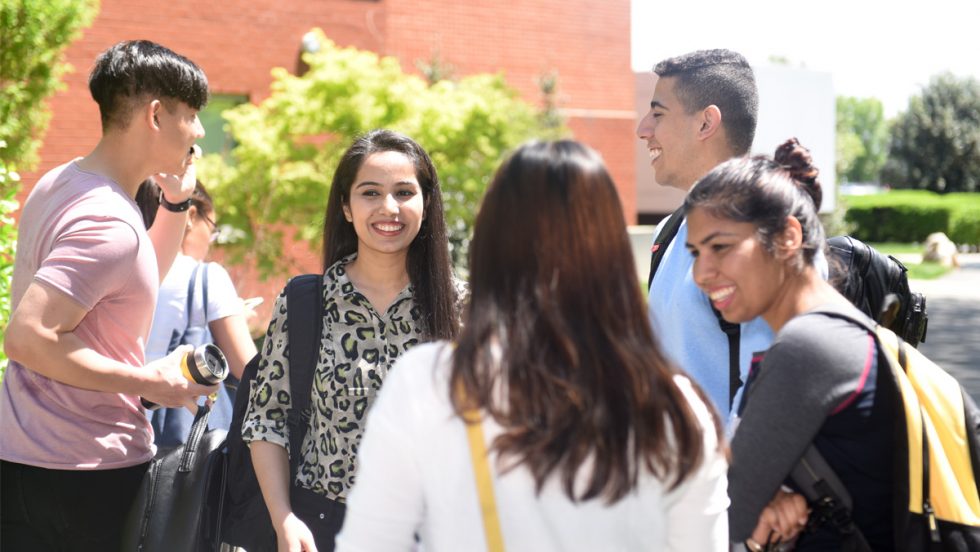
The College of Professional and Continuing Studies provided training on fostering equity in the classroom.
Understanding the needs of students. Providing a sense of belonging. Building relationships. Building community. These are important goals that good instructors try to bring to their classrooms.
Today, as the student population in higher education becomes increasingly diverse, it’s essential that teachers and administrators know how to create and encourage an inclusive learning environment where every student feels welcome and seen.
Fostering equity in online classes is the current research focus of the School of Social Work’s Professor Beverly Araujo Dawson, PhD, and Renee M. Rawcliffe, doctoral candidate and director of continuing education and professional development. Their article on the subject, “Strategies for Creating Inclusive Learning Environments Through a Social Justice Lens,” was published in November 2022 in the Journal of Educational Research & Practice.
Dr. Araujo Dawson and Rawcliffe recently shared their expertise with an audience of Adelphi University professors, adjunct faculty and administrators in an hour-long webinar, “Fostering Inclusive Learning Environments Workshop,” offered by the College of Professional and Continuing Studies.
“Equity is about ensuring that all students feel belonging and have equal chances to thrive, regardless of their abilities, identities or perspectives,” said Rawcliffe. “Equitable and inclusive teaching practices in the classroom are about creating environments that give all students equal opportunity to succeed.”
Those students are increasingly Black and Hispanic. Distance learning has grown in popularity, especially since the pandemic, and has made postsecondary education accessible to many more potential students, including adult nontraditional students. Yet research shows that students feel disconnected, particularly in online courses.
“They feel that those learning environments are sometimes not welcoming or inclusive of their experiences or their identities,” Dr. Araujo Dawson said. “We’re able to recruit students—or faculty—to the institution. But what are we doing to support them so that they’re having an equitable experience, they feel valued?”
Who are the students?
In order to foment equity and inclusivity, Dr. Araujo Dawson and Rawcliffe suggested taking several steps when working with students. The first questions educators need to ask are, Who are the students? What are they bringing to the classroom? How can they use that knowledge to create a learning environment where students feel welcome and seen?
“In order to truly support these students and ensure that they have a positive learning experience—that they have a positive experience on our campuses—we need to understand what their needs are,” said Dr. Araujo Dawson. It can be as simple as starting a class with a check-in, which, she says “has been very effective in welcoming students and giving them a chance to incorporate what’s going on in their lives into the classroom space.”
Other tips
- Create a supportive classroom environment. Giving students a sense that they belong is essential. Teachers can set the tone by sending a message that diverse thoughts are welcome in the classroom and that everyone doesn’t have to sound or look or behave in the same way. Offer opportunities for all students to be able to participate. Requiring students to meet individually with their instructor can also help to build that connection.
- Examine the curriculum. Use culturally responsive teaching, a research-based approach that lets teachers leverage who the students are—their cultures, languages and life experiences—in order to create rigorous, student-centered instruction. Another framework is trauma-informed teaching practices, which Rawcliffe is quick to say is not therapy with students, but rather an awareness of their lives.
- Continue learning. Reflection is an ongoing process for those in higher education who wish to practice inclusive pedagogy. Teachers and administrators need to continue to learn, to reflect on who they are and what biases they may bring to the classroom, Rawcliffe said. They can do this by asking themselves these questions: What are my identities? How do my students perceive me? How do I nurture safe and brave spaces in my classroom? How might the ways I manage these spaces and activities foster inclusion and allow for better opportunities for success? And what can I do better in the classroom?